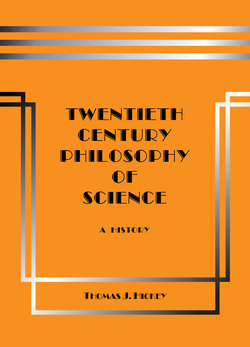Читать книгу Twentieth-Century Philosophy of Science: A History (Third Edition) - Thomas J. Hickey - Страница 59
На сайте Литреса книга снята с продажи.
3.28 Clear and Vague Meaning
ОглавлениеMeanings are more or less clear and vague, such that the greater the clarity, the less the vagueness. Vagueness is empirical underdetermination, and can never be eliminated completely, since our concepts can never grasp reality exhaustively. But vagueness in the semantics of a descriptive term is reduced by the addition of universal affirmations and/or negations accepted as true, to the list of the term’s semantic rules with each rule having the term as a common subject. The clarification is supplied by the semantics of the predicates in the added universal affirmations and/or negations.
Adding semantical rules increases clarity by elaboration. Thus if the list of universal statements believed to be true are in the form “Every X is A” and “Every X is B”, then clarification of X with respect to a descriptive predicate “C” consists in adding to the list either the statement in the form “Every X is C” or the statement in the form “No X is C”. Clarity is thereby added by elaborating the meaning of “X”.
Adding semantical rules that relate any of the univocal predicates in the semantical rules for the same subject increases clarity by increasing coherence. Thus if the predicate terms “A” and “B” in the semantical rules with the form “Every X is A” and “Every X is B” are related by the statements in the form “Every A is B” or “Every B is A”, then one of the statements in the list can be logically derived from the others. Awareness of the deductive relationship and the consequent display of structure in the meaning complex associated with the term “X” makes the complex meaning of “X” more coherent, because the deductive relation makes it more semantically integrated. And the coherence also supplies a psychological satisfaction. Clarity is thereby added by exhibiting semantic structure in a deductive system.
These additional semantical rules relating the predicates may be negative as well as affirmative. Additional universal negations offer clarification by exhibiting equivocation. Thus if two semantical rules are in the form “Every X is A” and “Every X is B”, and if it is also believed that “No A is B” or its equivalent “No B is A”, then the terms “A” and “B” symbolize parts of different meanings for the term “X”, and “X” is equivocal. Clarity is thereby added by the negation.
